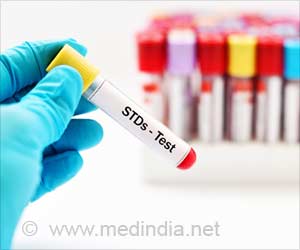A large number of people in India's northeast living with HIV, the virus that causes AIDS, are struggling for survival. Hundreds are dying with no access to treatment.
"People are dying regularly and suffering a lot, unable to access Anti Retroviral Therapy (ART) because such medicines are very expensive," said Dipak Singh, president of the Manipur Network of Positive People (MNPP).Two MNPP members died earlier this week allegedly due to lack of medication. "Hundreds have died with no access to treatment," Singh told IANS.
Although it is not a cure, ART is a combination of medicines that helps a person living with HIV to fight off infections and live a longer life.
Besides, ART also significantly impacts transmission by reducing the viral load concentration and minimising risk of transmission to their sexual partners.
A person living with HIV requires drugs worth about Rs.1,200-1,600 a month and the cost doubles if someone has to go for second line therapies depending on the nature of their immune system.
India accounts for about 5.2 million HIV-positive people, second only to South Africa. The northeast has been declared as one of the country's high-risk zones with close to 100,000 people infected with the virus.
Advertisement
"Lack of availability of ART and lack of research keeping in line with issues relevant to the epidemic were identified as gaps in the programme (for preventing the spread of HIV)," said a recent NACO, AusAID, and UNAIDS study titled "Rapid Needs Assessment of HIV Programme Needs in Five Northeastern States of India".
Advertisement
There are no official estimates or studies done to ascertain the number of HIV-positive people not having access to treatment.
"In Manipur we provide free ART through our roll out centres to about 2,500 people although the number of HIV-positive people in the state is nearly 23,000," said Promod Kumar Singh, head of Manipur government's AIDS Control Society.
Manipur lies on the edge of the heroin-producing "Golden Triangle" of Laos, Myanmar and Thailand and independent estimates have put the number of regular injecting drug users in the state at close to 200,000 - a key cause of HIV infection here.
"The problem is further compounded with HIV positive people now showing opportunistic infection like Hepatitis C. For such people treatment is very expensive. There is no access to treatment for thousands of such people in the northeast due to the cost factor," said S.I. Ahmed, chairman of the AIDS Prevention Society, a community healthcare group in Assam.
"I don't think I am going to survive beyond three to five years as I am co-infected with Hepatitis C. I am taking ART regularly but I cannot afford to take medicines for Hepatitis C," the MNPP president said.
The scenario is similar in most of the northeastern states. "The economic condition of the people in the northeast living with HIV is so poor that many of them cannot even afford to come to the ART roll out centres located in the towns or district headquarters to collect the free medicines," said C. Anand, coordinator on HIV/AIDS of the Catholic Relief Services, another community healthcare group in Assam.
A top UN official on HIV/AIDS said inadequate access to treatment could further aggravate the epidemic in the northeast.
"The response to the epidemic is to have proper access to treatment," said Noble Thalari, senior communication advisor of UNAIDS in India.
Source-IANS
SRM











